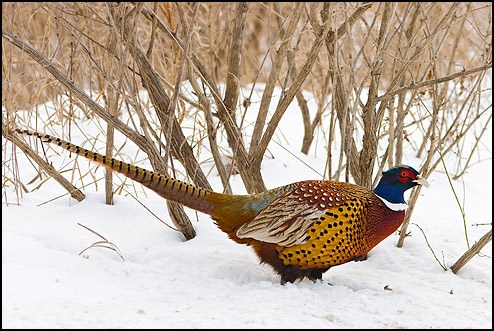Bird enthusiasts of Weyburn spread out across the area surrounding the community on Dec. 18 to participate in the annual Christmas bird count. Fourteen Nature Society members came out to participate in the count which covered an area that's approximately 15 miles in diameter to keep track of the number of birds and species of birds spotted. This year, there were 21 different species counted and approximately 1,143 birds counted in total.
Val Thomas, Nature Society member, said that the numbers this year were about average, but added that there were a number of species they were expecting to see but didn't.
"I was surprised we didn't get any blue jays this year. We usually do see a merlin as well but we didn't see one of those either," Thomas said. "Common redpolls usually get in on the count but we didn't see any of those. We also usually get bohemian waxwings and we didn't see any of those so I don't know what's up with that. I thought this would be a common redpoll year as they're biannual and come every second year but maybe they just haven't arrived yet."
Thomas noted that the upland game bird counts were quite high this year.
"We saw 143 gray partridge, 76 sharptailed grouse and 12 ring-necked pheasants. I know there's lots of pheasants by Bromhead and area, but to see 12 in the Weyburn count is surprising. We're sort of flat and there's not many bushes around us."
Thomas added that it's refreshing to see the number of people interested in birds and nature has been steadily increasing.
"Bird watching is actually becoming one of the fastest-growing sports in North America," Thomas said. "I'm not saying we're getting more people out for the bird counts, but there's definitely more interest in birds (from people in the Weyburn area) and more people are inquiring about them."
The purpose of the bird count is to get an idea of which birds are around our area during the winter and to see how healthy the population is. It is important to record bird count numbers annually because changes in the bird population can have significant implications that need to be noted. Birds can be an early indicator of danger related to climate change, environmental pollution and the destruction of ecologically-sensitive habitats.
The results of the bird count are sent to the correlator for Saskatchewan who then compiles the results and sends them to the National Audubon Society. The society is dedicated to protecting birds and wildlife as well as the habitat that supports them. They use the data collected to assess the health of local bird populations and to guide conservation actions, if necessary.
Fifteen Nature Society members participated in the Christmas bird count in 2009. Twenty different species were spotted last year, with 644 birds 小蓝视频 counted in total. Those numbers were down from the count in 2008, where over 1,000 birds were counted.




